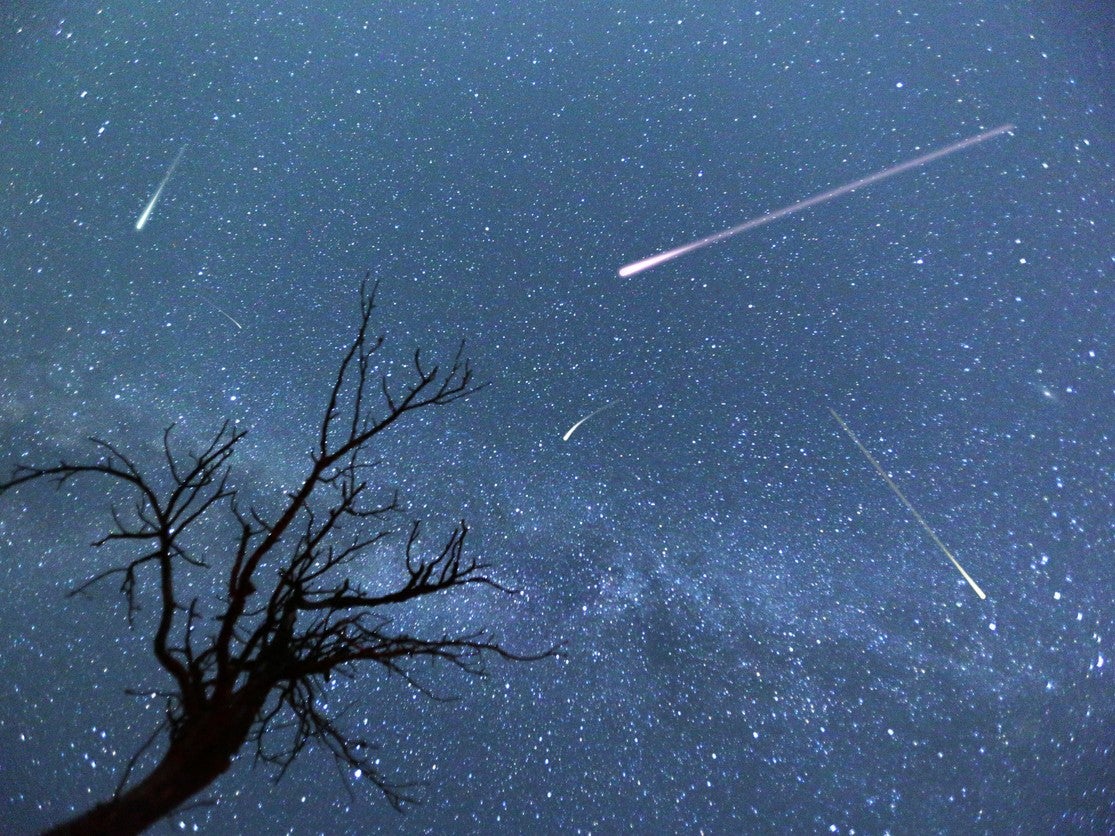Perseid meteor shower offers best chance to see a ‘shooting star’ in 2023
A new moon and favourable weather could see up to 100 meteors appear per hour

Your support helps us to tell the story
From reproductive rights to climate change to Big Tech, The Independent is on the ground when the story is developing. Whether it's investigating the financials of Elon Musk's pro-Trump PAC or producing our latest documentary, 'The A Word', which shines a light on the American women fighting for reproductive rights, we know how important it is to parse out the facts from the messaging.
At such a critical moment in US history, we need reporters on the ground. Your donation allows us to keep sending journalists to speak to both sides of the story.
The Independent is trusted by Americans across the entire political spectrum. And unlike many other quality news outlets, we choose not to lock Americans out of our reporting and analysis with paywalls. We believe quality journalism should be available to everyone, paid for by those who can afford it.
Your support makes all the difference.Hundreds of ‘shooting stars’ will light up the sky this August, as the Perseid meteor shower peaks in one of the most impressive displays of the year.
The meteor shower began on 17 July and will continue until 24 August, though the highest frequency will occur on 12 August.
The peak of the Perseids will be particularly well timed this year, arriving close to a new moon that will not disrupt the spectacle with its brightness.
“The Moon will be a thin crescent rising not long before twilight begins, so moonlight will not interfere, and there is a real advantage to being in a dark sky site away from the lights of towns and cities,” a spokesperson for the Royal Astronomical Society said.
“Observers on the west coast of North America and the eastern Pacific Ocean are particularly well placed.”
The shower is one of the highlights of the year for many sky gazers due to its high hourly rate and bright meteors, caused by the Earth slamming into the debris left behind by comet 109P/Swift-Tuttle in July and August every year.
This year the event will see up to 100 shooting stars an hour. It is called the Perseids because the meteors seem to originate from the constellation of Perseus.
The meteors are best viewed from the northern hemisphere, and in ideal conditions with no clouds or light pollution.
The shower is considered one of the best of the year because it produces bright meteors and is one of the most active.
There is also a high chance of seeing fireballs, which are very bright meteors, as well as meteors with long trains.
The Royal Astronomical Society noted that meteor showers are easy to watch, requiring no special equipment.
The radiant of the Perseids is actually always above the horizon as seen from the UK, which means observers should be able to see some meteors as soon as the Sun sets.
Experts suggest it is favourable to try to spot meteors when the Moon is below the horizon or when it is in its crescent phase, because otherwise it acts as natural light pollution and will prevent the fainter meteors from being visible.
Long range weather forecasts from the UK Met Office suggest clear skies will be increasingly likely as the peak of the Perseid meteor shower approaches.
Additional reporting from agencies

Join our commenting forum
Join thought-provoking conversations, follow other Independent readers and see their replies
Comments